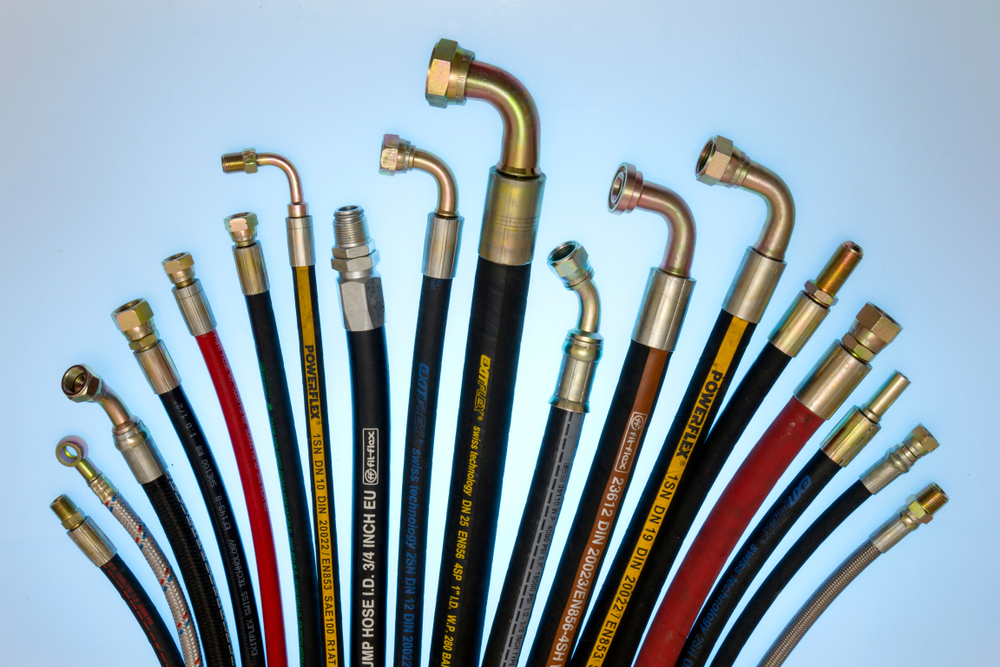
The Importance of Matching Hydraulic Hoses to Your Fluid Type
Hydraulic systems are critical to the performance and safety of countless machines across industries ranging from construction to manufacturing. At the heart of these systems are hydraulic hoses, which transport fluid under pressure to power equipment. Selecting the right hose is more complex than choosing a size or pressure rating. One of the most overlooked yet essential aspects of hydraulic hose selection is fluid compatibility. A mismatch between the fluid type and the hose material can result in leaks, premature wear, costly downtime, and even safety hazards.
In this article, we will explore why hydraulic hose fluid compatibility is so vital, the science behind hose materials, the consequences of neglecting compatibility, and practical guidance for ensuring the right match every time.
Hydraulic Hose Fluid Compatibility
Hydraulic hose fluid compatibility refers to the ability of a hose’s inner tube and cover materials to resist degradation when exposed to the hydraulic fluid being used. Hydraulic systems rely on fluids such as mineral oils, water-glycol solutions, synthetic blends, and bio-based alternatives. Each fluid interacts differently with rubber, thermoplastic, or reinforced hose constructions.
The inner tube of a hose is the first line of defense. If the tube material is not compatible, it can soften, harden, crack, or swell when exposed to the fluid. Over time, this degradation reduces efficiency and may even contaminate the system with particles. Similarly, the hose cover must resist external exposure to oils, chemicals, or environmental conditions that may accompany the fluid in operation.
This is why hydraulic hose selection cannot be separated from the choice of hydraulic fluid. Compatibility charts provided by manufacturers are indispensable tools for engineers and maintenance professionals. These charts map out how hose compounds perform against specific fluid types, giving a clear picture of which combinations are safe and which should be avoided.
Why Hose Material Matters
Different hoses are engineered with distinct materials to balance strength, flexibility, and resistance to chemicals. Rubber hoses, often made from nitrile or neoprene, provide excellent resistance to petroleum-based fluids. Thermoplastic hoses, by contrast, are lightweight and offer good compatibility with synthetic or water-based fluids. Reinforced hoses with steel wire braids or spirals handle high pressures while maintaining flexibility, but they still depend on their inner tube material for chemical resistance.
When considering hydraulic hose fluid compatibility, engineers must account for both the fluid’s chemical composition and the operating environment. For example, a hose designed for petroleum oils may fail quickly if exposed to phosphate ester fluids. Similarly, a hose resistant to synthetic blends may degrade in extreme heat or when subjected to ozone and UV radiation.
Temperature is another critical factor. Even if a hose material is compatible with a fluid chemically, elevated temperatures can accelerate chemical reactions and breakdown. A fluid-safe hose at room temperature may not perform under the high-heat conditions of heavy-duty hydraulic machinery.
The key takeaway is that hose material selection is a science of balance. Pressure ratings, temperature limits, and chemical resistance must all align with the chosen fluid and operating environment to ensure reliable and safe performance.
Consequences of Poor Compatibility
Overlooking hydraulic hose fluid compatibility can lead to severe operational and financial consequences. The most common problems include leaks, system contamination, and catastrophic hose failure.
Leaks may seem minor at first but quickly escalate into downtime, higher maintenance costs, and environmental hazards. A leaking hose not only wastes fluid but also reduces system pressure, which directly impacts performance. In industries where productivity depends on uptime, such as mining or agriculture, this can translate into significant financial loss.
System contamination is another hidden danger. When a hose material breaks down under chemical attack, particles of degraded rubber or plastic enter the hydraulic fluid. These contaminants circulate throughout the system, clogging valves, damaging seals, and wearing down pumps and actuators. The result is a chain reaction of failures that may require costly repairs or even full system replacement.
Catastrophic failure represents the most dangerous outcome. A hose rupture under pressure can cause fluid injection injuries, equipment damage, and fire hazards if the fluid is flammable. Safety regulations in most industries emphasize the importance of using hoses certified for both pressure and chemical compatibility to reduce these risks.
Ultimately, improper hydraulic hose selection can compromise safety, damage equipment, and drive up operating costs. This underscores the importance of making fluid compatibility a central factor in hose choice.
Best Practices for Hydraulic Hose Selection
Choosing the right hose requires a systematic approach that goes beyond simply meeting size and pressure requirements. Industry professionals often use the STAMPED method as a guideline, which stands for Size, Temperature, Application, Media, Pressure, Ends, and Delivery. The “Media” component specifically addresses the type of fluid being conveyed, reinforcing the need to prioritize hydraulic hose fluid compatibility.
The first step is to identify the exact fluid type and whether it is petroleum-based, synthetic, or water-based. Then, consult manufacturer compatibility charts to verify which hose materials are suitable. Always ensure the chosen hose can withstand both the chemical properties of the fluid and the operating temperature range.
Regular inspection and preventive maintenance are equally important. Even with the correct hose, operating conditions can change. Switching to a different hydraulic fluid without reevaluating compatibility may lead to failures. Maintenance teams should document the fluid type used in each system and verify that replacement hoses meet the same compatibility standards.
Another best practice is to source hoses from reputable manufacturers and distributors. Quality hoses undergo rigorous testing for chemical resistance, pressure, and temperature ratings. Using substandard hoses that lack certification may save money upfront but result in higher costs due to failures and downtime.
Finally, training operators and maintenance personnel on the importance of fluid compatibility can significantly reduce risks. When every team member understands that not all hoses are created equal, the chances of errors in replacement and servicing decrease dramatically.
The Role of Innovation in Hose Technology
Advancements in materials science and engineering have expanded the options available for hydraulic hose selection. New compounds and reinforcement technologies offer improved resistance to aggressive fluids, higher temperature tolerances, and greater flexibility. Bio-based and environmentally friendly fluids, which are gaining popularity in industries seeking sustainability, require hoses specifically designed for compatibility with non-traditional chemicals.
Thermoplastic and hybrid hoses are also gaining traction in specialized applications where lightweight design and superior chemical resistance are required. These innovations allow engineers to tailor hose solutions to increasingly complex fluid formulations while maintaining safety and efficiency.
Another area of innovation lies in predictive maintenance. Sensors integrated into hoses can monitor conditions such as temperature, pressure, and even chemical interactions in real time. This technology enables proactive maintenance by alerting operators before hose failure occurs, reducing downtime and enhancing system reliability.
As hydraulic systems evolve to meet modern demands, staying informed about new hose technologies and fluid compatibility standards is essential. Continuous education and awareness will ensure that engineers and technicians can make informed decisions in this rapidly changing field.
Conclusion
The success and safety of hydraulic systems depend heavily on the relationship between the hose and the fluid it carries. Hydraulic hose fluid compatibility is not a minor detail but a central factor in hydraulic hose selection. Using incompatible hoses can result in leaks, contamination, downtime, and safety hazards, while proper selection extends equipment life, enhances performance, and ensures workplace safety.
By understanding hose materials, following best practices, and leveraging innovations in hose technology, professionals can make informed decisions that protect both equipment and operators. Ultimately, matching hydraulic hoses to fluid type is an investment in reliability, efficiency, and safety that no operation can afford to overlook.
Royal Brass Incorporated
Welcome Royal Brass Incorporated! We are your 3rd generation, family-owned, local hose supplier! Our family has dedicated our services to supplying northern California with all types of hoses, fittings, flanges, regulators, valves, adapters, and gauges. We pride ourselves on having the most extensive inventory in northern California. Our inventory ensures that we can fix most products on site, the same day. Here at Royal Brass Incorporated, we only hire qualified individuals who are trained in factory sales. Our fully stocked warehouses ensure that we can fill your hydraulic and pneumatic hose, tubing, and fitting needs on time, every time. High-quality customer service is our goal and has been since 1952. Stop by or contact us today!
Categorised in: Hydraulic Hose





